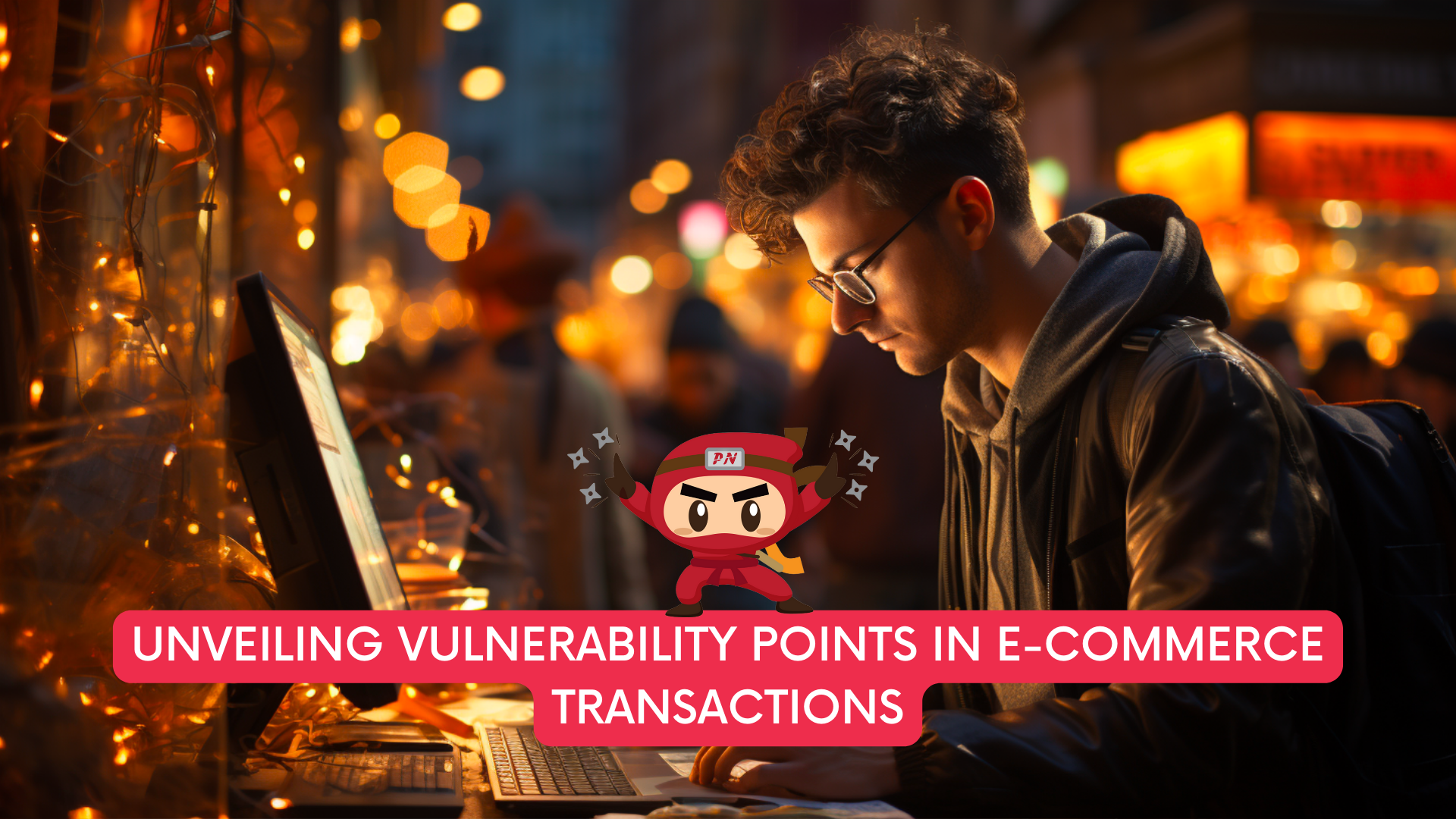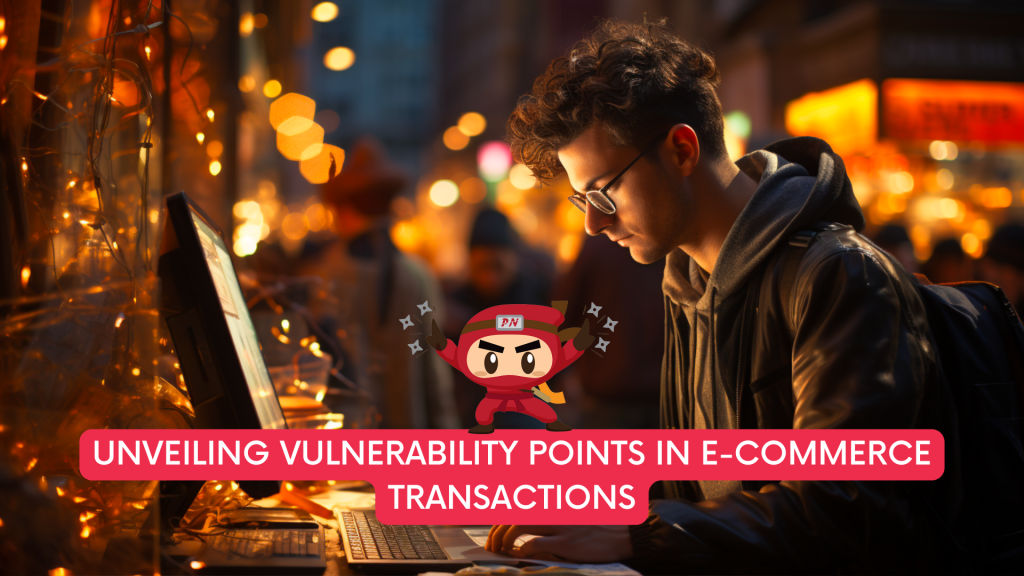KEEP IN TOUCH
Subscribe to our mailing list to get free tips on Data Protection and Cybersecurity updates weekly!







E-commerce has become an integral part of modern life. With the convenience of shopping at our fingertips, we indulge in online purchases from the comfort of our homes.
However, as we enjoy the perks of e-commerce, we must also be aware of the potential vulnerability points that can compromise our transactions. In this article, we will delve into the key vulnerability points in e-commerce transactions and explore essential measures to safeguard your online shopping experience.
Vulnerability Point: Payment gateways serve as the gateway for processing payments during e-commerce transactions. If these gateways are not adequately secured, they can become prime targets for cyber attackers seeking to steal sensitive financial information.
Safeguarding Measure: Prioritise using reputable and well-established payment gateways that implement strong encryption protocols and security measures. Look for the “HTTPS” in the URL and a padlock symbol in the address bar, indicating a secure connection.
Vulnerability Point: Weak and easily guessable passwords pose a significant security risk, leaving e-commerce accounts vulnerable to unauthorized access.
Safeguarding Measure: Create strong passwords containing a mix of uppercase and lowercase letters, numbers, and special characters. Avoid using common phrases, names, or easily guessable information. Enable two-factor authentication whenever possible to add an extra layer of security.
Vulnerability Point: Cybercriminals often use phishing attacks to deceive users into disclosing personal information or login credentials on fraudulent websites that mimic legitimate e-commerce platforms.
Safeguarding Measure: Be cautious when clicking on links in emails or messages, especially if they ask for personal information. Always verify the website’s legitimacy by directly typing the URL in the browser or using bookmarks.
Vulnerability Point: Conducting e-commerce transactions over unsecured Wi-Fi networks, such as public hotspots, can expose your data to potential eavesdropping by hackers.
Safeguarding Measure: Whenever possible, avoid making transactions on public Wi-Fi networks. Use a virtual private network (VPN) to encrypt your internet connection and add an extra layer of security.
Vulnerability Point: E-commerce websites with security vulnerabilities, such as outdated software or weak firewalls, become easy targets for cyber attackers seeking to compromise customer data.
Safeguarding Measure: Shop from reputable and well-known e-commerce platforms that invest in robust cybersecurity measures. Regularly update your web browser and ensure your operating system is up to date to minimize security risks.

Vulnerability Point: Card skimming attacks involve cybercriminals injecting malicious code into e-commerce websites, allowing them to capture payment information from unsuspecting customers.
Safeguarding Measure: Use credit cards instead of debit cards for online transactions, as credit cards offer better fraud protection. Regularly monitor your financial statements for any suspicious activities and report unauthorized charges immediately.
Vulnerability Point: Insider threats within e-commerce businesses, such as disgruntled employees or third-party vendors with access to customer data, can potentially misuse or leak sensitive information.
Safeguarding Measure: Implement strict access controls and monitor employee activities with a focus on data access and usage. Conduct background checks on employees and third-party vendors to ensure their trustworthiness.
Vulnerability Point: The absence of SSL/TLS encryption during data transmission leaves customers’ personal and financial information vulnerable to interception and theft.
Safeguarding Measure: Ensure that the e-commerce website you use is secured with SSL/TLS encryption. Look for the padlock symbol and “HTTPS” in the URL to ensure a secure connection.
Vulnerability Point: Third-party integrations used by e-commerce websites, such as chatbots or plugins, may introduce security weaknesses if not properly vetted.
Safeguarding Measure: Regularly review and assess the security practices of third-party integrations used on e-commerce platforms. Choose reputable and trusted providers with a track record of robust security measures.
Vulnerability Point: Lack of customer awareness regarding potential security risks in e-commerce transactions can lead to inadvertent data breaches and identity theft.
Safeguarding Measure: Educate yourself and customers about online security best practices. Implement measures like security awareness campaigns, customer guides, and support resources to promote safe online shopping habits.

E-commerce has revolutionised the way we shop, providing unparalleled convenience and accessibility. However, it also brings certain vulnerabilities that cybercriminals may exploit. By being aware of the key vulnerability points in e-commerce transactions and adopting essential safeguarding measures, you can protect yourself from potential risks and enjoy a safe and secure online shopping experience. Stay informed, stay vigilant, and safeguard your data as you indulge in the world of e-commerce.
Your appointed DPO can work with you on your PDPA compliance, ensuring that there will be policies in place to ensure that personal data handling is PDPA compliant. This includes having policies to ensure that no vulnerabilities from e-commerce transactions will ever affect an organisation’s cybersecurity.
A Data Protection Officer (DPO) oversees data protection responsibilities and ensures that organisations comply with the Personal Data Protection Act (PDPA). Furthermore, every Organization’s DPO should be able to curb any instances of PDPA noncompliance as it is the officer responsible for maintaining the positive posture of an organisation’s cybersecurity.
DPOs complement organisations’ efforts to ensure that the organisation’s methods of collecting personal data comply with the PDPA. It also ensures that policies are set in place to make sure that there will be no instances of data breaches in the future.
Don’t wait any longer to ensure your organisation is PDPA compliant. Take our free 3-minute PDPA Compliance Self-audit checklist now, the same “secret weapon” used by our clients to keep them on track. Upon completion, we will send you the results so you can take the necessary action to protect your customers’ data. Complete the free assessment checklist today and take the first step towards protecting your customers’ personal data.